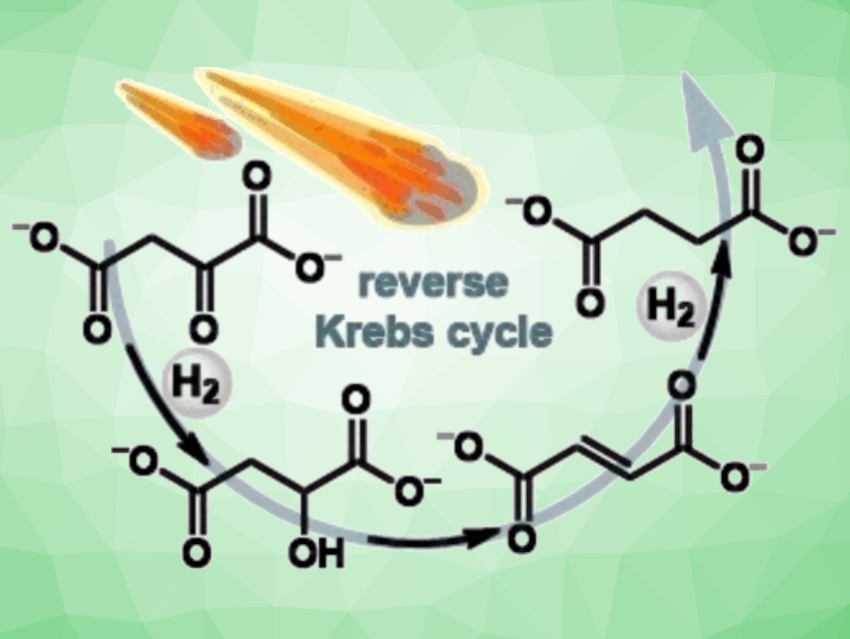Naturally occurring chemical reactions may have evolved into the biochemical processes we know today. Sophia A. Rauscher and Joseph Moran, University of Strasbourg, France, have discovered that a reaction sequence from the so-called reverse Krebs cycle—a fundamental biochemical process—can also take place without enzymes. The team found that metals and even powdered meteorite material can catalyze hydrogenation reactions.
Cells obtain energy and molecular building blocks through metabolic processes. Compounds are synthesized and broken down again in universal biochemical processes with the help of enzymes. However, simple organic molecules such as organic acids, amino acids, and peptides have been found in extraterrestrial objects, suggesting that organic molecules might have existed on early Earth, even before life as we know it developed.
The Reverse Krebs Cycle
Taking the theory of a self-organizing chemical network, some fundamental biochemical reaction sequences derived from naturally occurring chemical reactions may have evolved into the biochemical processes we know today.
The team investigated a sequence of the reverse Krebs cycle, a biochemical process used by some microorganisms for fixing carbon dioxide. In this portion of the process, the small organic molecule oxaloacetate is hydrogenated and dehydrated to give succinate in three chemical steps.
Metal or Meteorite Catalysis
In the cellular reverse Krebs cycle, hydrogenation takes place using enzymes that transfer organically bound hydrogen. In order to simulate hydrogenation as it might have occurred on the primordial earth three to four billion years ago, the team used elemental hydrogen and metal catalysts. They justified these choices since hydrogen is formed in natural geological processes and can accumulate in reservoirs in the ground or in hydrothermal vents. In addition, meteorites that fell to earth during this period brought metals with them.
In the experiment, malate was initially formed from oxaloacetate in a hydrogenation reaction, even under mild reaction conditions, mimicking the first hydrogenation step in the pathway. Following the dehydration of malate to fumarate, succinate was formed from fumarate in a further hydrogenation step, following the same sequence of molecules and reactions as in the biological reverse Krebs cycle. Metals such as nickel and even a pure powdered meteorite sample were able to catalyze the reactions. These findings could prove relevant for our understanding of the origins of some fundamental metabolic pathways, the researchers argue.
- Hydrogen Drives Part of the Reverse Krebs Cycle under Metal or Meteorite Catalysis,
Sophia A. Rauscher, Joseph Moran,
Angew. Chem. Int. Ed. 2022.
https://doi.org/10.1002/anie.202212932




